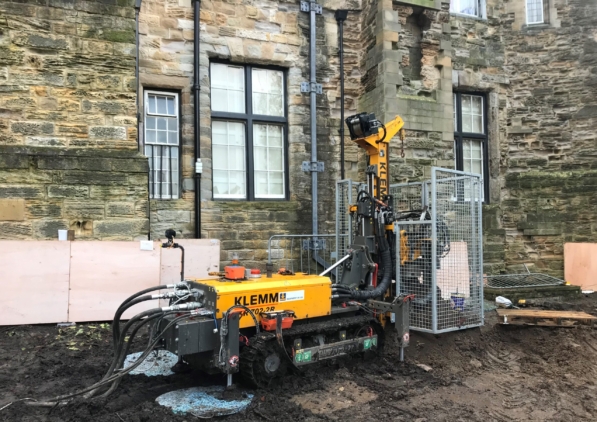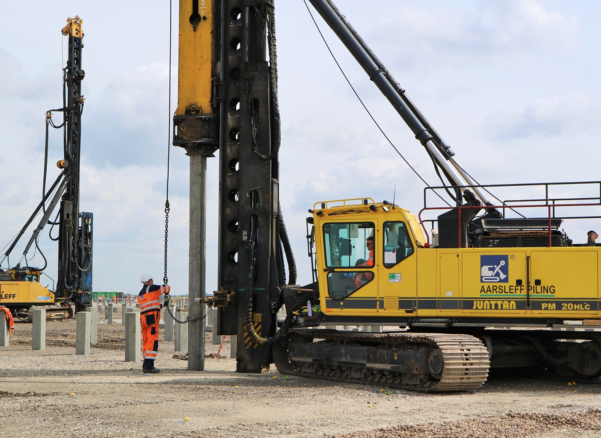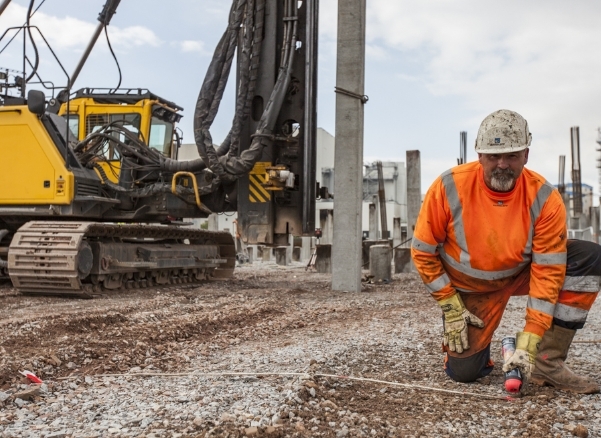What Are Mini Piles?
Table of Contents
About Mini Piles
Mini piles, also known as micro piles, are used in underpinning applications to strengthen existing structures such as bridges, retaining walls and floor slabs. Mini piles are generally made from steel and come in various sizes, from 100mm in diameter to 600mm in diameter. They are often used in areas with limited access or headroom, making them ideal for works inside buildings or on sites with restrictive access. [1]
With various applications, these small-diameter piles can be used in conjunction with steel-reinforced ground beams to replace traditional footings when ground conditions become unfavourable.

How Does Mini Piling Work?
Mini piles are driven or drilled into the ground by a piling rig and equipment. Instead of a traditional piling rig, mini piling rigs are used. These rigs are smaller in size, providing more flexibility in getting into restricted access sites. The dimensions of mini piling rigs can vary from 720mm to 2500mm wide. Some rigs can be so compact that they can enter through a 3.3ft wide door.
Mini piles can be installed in different methods or techniques. The most suitable method depends on the ground conditions and project requirements. Here are three common methods of mini piling:
- Sectional Flight Auger (SFA) – SFA piling is used in low headroom or very restricted job sites where a CFA rig is not possible. The piles are formed using sectional lengths of hollow stem continuous flight augers. SFA is typically considered for use in all unobstructed ground conditions, including made up ground and ground with high water tables. Due to the size of the rigs used, they are ideally suited for areas with restricted access or low working height.
- Augered Piling – Augered piling is generally used in cohesive soils where segmental augers are rotated into the ground and the soil being penetrated is flighted to the surface by the augers. Where the ground is unstable, temporary casings can be installed in conjunction with the augers to progress the bore. When the desired pile length has been achieved, the steel reinforcement is placed, and the pile bore is filled with either concrete or grout. This technique is particularly time-efficient and cost-effective where open boring is possible.
- Mini Bottom-Driven Piling – Mini bottom-driven piling is efficient and suitable for most ground conditions. A closed-ended, thin-walled steel tube is driven in lengths between 2m and 6m using an internal drop hammer onto a dry concrete plug. The tubes are joined by a full but non-structural fillet weld as the installation proceeds until the pile is driven to a predetermined set or design length criteria. Once the required depth is reached the tube is filled with high slump concrete or grout and a single bar or cage is inserted.
How Are Mini Piles Installed?
Here is a step-by-step guide on how mini piles are generally installed [2]:
- Site Investigation – Before any piling work begins, a site investigation is conducted. This includes geological surveys to understand the soil profile, which helps in designing the piles according to the load requirements and soil conditions. Engineers also consider the proximity of adjacent structures and any existing below-ground utilities.
- Design – Based on the site investigation, engineers will design the pile system, choosing appropriate diameters, materials, and depths for the piles. This will also include specifying the layout and spacing of the piles.
- Site Preparation – The site is prepped and the exact pile positions are marked out.
- Pile Installation – The mini piles are installed according to the chosen method or technique.
- Grouting – In some cases, grouting is conducted to improve the load-bearing capacities of the piles.
- Testing – Once the piles are installed, tests are often carried out to verify their load-bearing capacity and integrity.

Advantages of Mini Piling
The advantages of using mini piling systems include:
- Work extremely well both in tension and compression
- Enables builders to create extensions to homes in tight spaces that would have been out of bounds
- Speedy installation, depending on ground conditions
- Causes minimal disturbance and vibration to adjacent structures during the installation
- With suitable ground conditions, they can be installed cost-effectively with high load capacities
- Greater depths can be reached with ease
- Can be structurally incorporated into existing foundation systems
- Can work within low headroom in restricted working conditions
- Ideal for sites with environmental sensitivity or close to buildings
- Use less concrete and steel than other piling systems, reducing the foundation’s carbon footprint
Sources
- Designing Buildings. (2022). Micropiles. Retrieved on 4th February 2025, from:
https://www.designingbuildings.co.uk/wiki/Micropiles - UK Construction Blog. (2024). Understanding Pile Foundations and the Mechanics of Mini Piling. Retrieved on 4th February, from:
https://ukconstructionblog.co.uk/2024/01/09/understanding-pile-foundations-and-the-mechanics-of-mini-piling/








